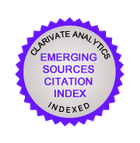Different doses and forms of chromium in diets for young pigs
https://doi.org/10.29235/1817-7204-2019-57-1-74-84
Abstract
About the Authors
V. M. GolushkoBelarus
Golushko Vasily M. - Corresponding Member, D. Sc. (Agriculture), Professor.
11 Frunze Str., Zhodino 222160, Minsk Region.
A. V. Kravchenko
Belarus
Kravchenko Alexander V. - Postgraduate student.
11 Frunze Str., Zhodino 222160, Minsk Region.
S. A. Linkevich
Belarus
Linkevich Sergey A. - Ph. D. (Agriculture), Associate Professor.
11 Frunze Str., Zhodino 222160, Minsk Region.
References
1. Panin A. N. Nutrigenomics in animal husbandry: the main provisions and practical application of the new technology. 2 simpozium po svinovodstvu, Kazan’, 29-30 marta 2012 g. [2 Symposium on Pig Breeding, Kazan, March 29-30, 2012]. S. l., 2012, pp. 5-6 (in Russian).
2. Fisinin V. I., Surai P. F., Papazyan T. T. Revolutionary science - nutrigenomics. ZhivotnovodstvoRossii [Russian animal husbandry], 2006, no. 11, pp. 21-23 (in Russian).
3. Schwarz K., Mertz W. Chromium (III) and the glucose tolerance factor. Archives of Biochemistry and Biophysics, 1959, vol. 85, no. 1, pp. 292-295. https://doi.org/10.1016/0003-9861(59)90479-5
4. Gibalkina N. I., Fedaev A. N., Skoptsov V. A., Kokorev V. A. The effect of chromium on digestibility and nutrient utilization of diets in the body of bulls during fattening. Vestnik sel ’skokhozyaistvennoi nauki Mordovii: sbornik nauchny trudov [Journal of Agricultural Science of Mordovia: a collection of scientific papers]. Saransk, 2000, pp. 61-67 (in Russian).
5. Gibalkina N. I., Fedaev A. N., Kokorev V. A., Syropyatova T. E. Growing bulls with hay feeding type with different levels of chromium in the rations. Estestvenno-nauchnye issledovaniya: teoriya, metody, praktika: mezhvuzovskii sbornik nauchnykh trudov [Natural scientific research: theory, methods, practice: intercollegiate collection of scientific papers]. Saransk, 2003, pp. 78-79 (in Russian).
6. Gibalkina N. I., Fedaev A. N., Skoptsov V. A., Kokorev V. A. The content of chromium in the organs and tis¬sues of bulls. Vestnik sel’skokhozyaistvennoi nauki Mordovii: sbornik nauchnykh trudov [Journal of Agricultural Science of Mordovia: a collection of scientific papers]. Saransk, 2000, pp. 67-74 (in Russian).
7. Fedaev A. N., Kokorev V. A., Gibalkina N. I. The effect of chromium levels on the productivity of bulls. Problemy fiziologii, biokhimii i pitaniya zhivotnykh: sbornik nauchnykh trudov [Problems of physiology, biochemistry and nutrition of animals: collection of scientific papers]. Saransk, 1998, pp. 115-118 (in Russian).
8. Fedaev A. N., Kokorev V. A., Gibalkina N. I. Theoretical and practical rationale for the use of chromium in the fee¬ding of young cattle. Saransk, Mordovian Book Publishing House, 2003. 224 p. (in Russian).
9. Kokorev V. A., Gur’yanov A. M., Gibalkina N. I., Musul’kin D. R., Fedaev A. N. Metabolism and productivity of heifers and cows with different levels of chromium in the diets. Zhivotnovodstvo i veterinarnaya meditsina [Animal Husbandry and Veterinary Medicine], 2014, no. 3, pp. 7-13 (in Russian).
10. Yudina T. A., Seryakov I. S. The results of the use of different dosages of chromium on the reproductive ability and some hematological indicators of sows. Zhivotnovodstvo i veterinarnaya meditsina [Animal Husbandry and Veterinary Medicine], 2013, no. 1, pp. 9-14 (in Russian).
11. Anishchik V. M., Borisenko V. E., Zhdanok S. A., Tolochko N. K., Fedosyuk V. M. Nanomaterials and nanotechno-logies. Minsk, Publishing Center of the Belarusian State University, 2008. 372 p. (in Russian).
12. Hung T.-Y., Leury B. J., Sabin M. A., Dunshea F. R. Effect of nano-chromium on growth performance carcass cha-racteristics and glucose metabolism of fishing pigs. Australasian Pork Research Institute Ltd. Available at: http://apri.com. au/2F-108_Final_Report_110928.pdf (accessed 19.12.2018).
13. Yurin V. M., Molchan O. V. Nanomaterials and plants: look at the problem. Trudy Belorusskogo Gosudarstvennogo Universiteta. Fiziologicheskie, biokhimicheskie i molekulyarnye osnovy funktsionirovaniya biosistem = Proceedings of the Belarusian State University. Physiological, Biochemical, and Molecular Biology Sciences, 2015, vol. 10, pt. 1, pp. 9-21 (in Russian).
14. Plutakhin G. A., Machneva N. L., Trokhimchuk N. N. Intensification of cultivation of chlorella with the use of iron nanoparticles. Nauchnyi zhurnal KubGAU = Scientific Journal of KubSAU, 2017, no. 126 (02). Available at: http://www.ej.kuba- gro.ru/2017/02/pdf/54.pdf (accessed 12.12.2018) (in Russian). https://doi.org/10.21515/1990-4665-126-054
15. Raspopov R. V. Modern methods for the determination of nanoparticles and nanomaterials in natural objects. Voprosy detskoi dietologii = Pediatric Nutrition, 2009, vol. 7, no. 4, pp. 69 (in Russian).
16. Nazarova A. A., Churilov G. I. Scientific and practical rationale for the use of metal nanopowders in the feeding of farm animals. Ryazan, Publishing house Ryazan State Agrotechnological University, 2010. 144 p. (in Russian).
17. Churilov G. I., Ampleev L. E. Biological effect of nanoscale metals on various groups ofplants. Ryazan, Publishing house Ryazan State Agrotechnological University, 2010. 150 p. (in Russian).
18. Kashirina L. G., Kulakov V. V., Saitkhanov E. O. Physiological rationale for the use of nanoscale iron powder to increase the production of pork. Ryazan, Publishing house Ryazan State Agrotechnological University, 2013. 189 p. (in Russian).
19. Il’ichev E. A., Polishchuk S. D. Effect of nanopowder iron on meat productivity indicators calves black-white breed. Molochnoe i myasnoe skotovodstvo = Dairy and Beef Cattle Farming, 2011, no. 1, pp. 24-26 (in Russian).
20. Podol’nikov V. E. Influence of zeolite-whey additive on productivity and energy metabolism. Autor. diss. Cand. S.-H. Sciences. Bryansk, 1999. 16 p. (in Russian).
21. Hennig A. Mineralstoffe, Vitamine, Ergotropika. Berlin, Deutscher Landwirtschaftsverlag, 1972. 636 S. (Russ. ed.: Khenning A. Mineral’nye veshchestva, vitaminy, biostimulyatory v kormlenii sel’skokhozyaistvennykh zhivotnykh. Moscow, Kolos Publ., 1976. 559 p.)



































